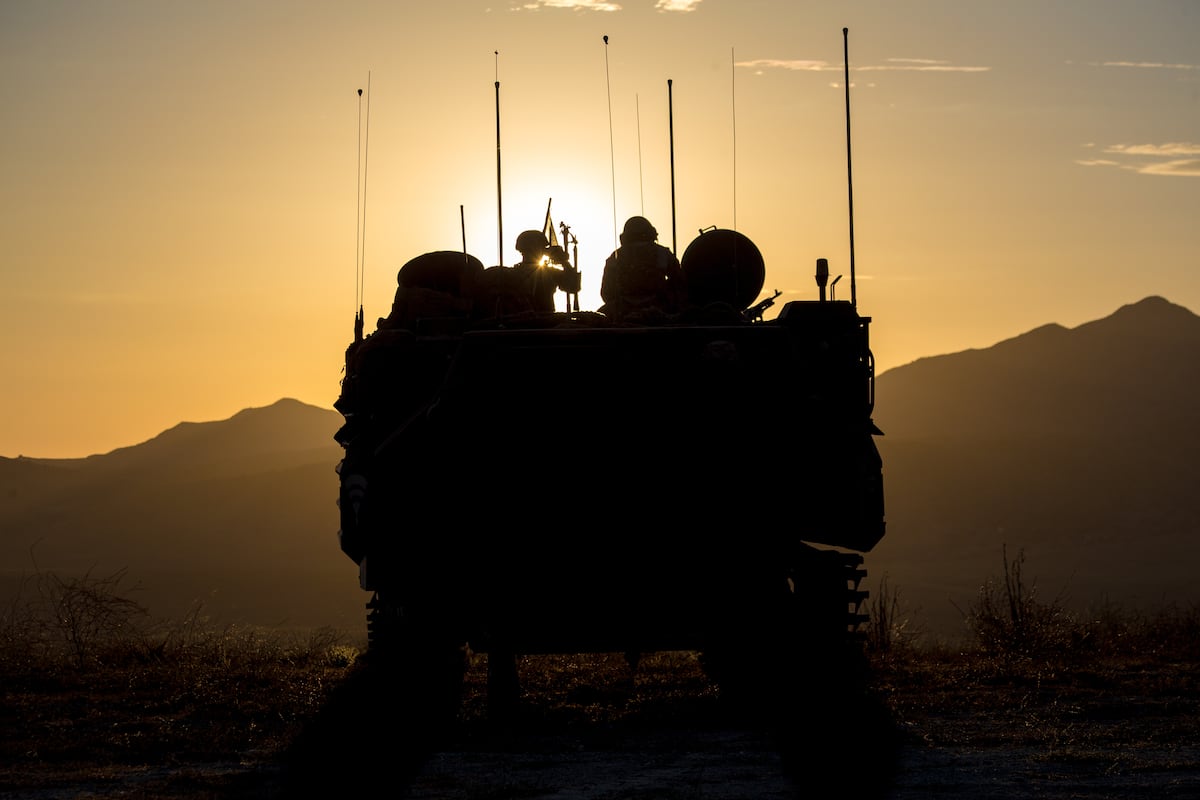Marines retire ‘workhorse’ Assault Amphibious Vehicle after 50 years

From the shores of Grenada to the deserts of Iraq, the Assault Amphibious Vehicle (AAV) shielded and carried Marines from ship to sea to shore for over 50 years.
Now, after a Sept. 26 ceremony, the famous “workhorse” has been officially decommissioned.
Col. Lynn Berendsen, commander of the Assault Amphibian School at Camp Pendleton, California, noted during the ceremony that the AAVs were intertwined with the legacy of the Marines that operated them.
“The AAV gave Maines both mobility and armored protection, allowed them to close with the enemy and seize objectives at speed,” Berendsen said. “In the desert, just as in the Pacific beaches decades earlier, [the AAV] showed it was more than a connector — it was a fighting vehicle at the heart of the Marine Air Ground Task Force.”
Assault Amphibious Vehicles are being replaced with a newer model — an eight-wheeled vehicle known as the Amphibious Combat Vehicle, or ACV, which has been in the field for the past several years.
The Sept. 26 commemoration, however, saw the official sunsetting of the historic vehicle.
“The AAV-P7 has been many things, a ship to shore connector, an armored fighting vehicle, a troop carrier, a logistics platform and even sometimes a live boat,” Berendsen said. “Most importantly, it was in a place where Marines made their mark in combat in service and in sacrifice.”
In 1972, the AAV became part of the Marine Corps lethal repertoire after United Defense (a former division of FMC Corporation, now part of BAE), was awarded a $78.5 million contract for it.
The AAV is a tale rooted in amphibious warfare and its inevitable evolution.
It replaced the storied Landing Vehicle, Tracked (LVT), which first saw combat in August 1942 in Guadalcanal. From Tarawa to Inchon and through the Vietnam War, the LVT delivered Marines to beachheads far and wide while under enemy fire.
Over its nearly five decades of service, the AAV underwent several iterations — improving its maneuverability, firepower and protections to meet the evolving needs of modern combat.
However, service officials decided in 2018 that it was time for the workhorse to be retired, replaced by a more modern vehicle that is more suited to expeditionary and large-scale combat operations.
Then in 2020, the AAV came under intense scrutiny after eight marines and a sailor were killed after their vehicle sank off the coast of California during an exercise. A command investigation into the incident revealed that the sinking was a result of poor training, a vehicle in “horrible condition” and lapsed safety procedures in a rush to deploy an operational AAV platoon.
A second Marine Corps investigation resulted in the firing of Maj. Gen. Robert Castellvi as Inspector General of the Marine Corps because of failures in his prior position as commander of the 1st Marine Division to ensure the Marines from 1st Battalion, 4th Marines, and 3rd Amphibious Assault Battalion were properly trained before attaching to the MEU.
The ACV has had setbacks of its own since its was first fielded in late 2020.
From September 2021 to January 2022, the Marine Corps paused waterborne operations with the amphibious combat vehicle because of a problem with the tow rope.
Then, in July 2022, a vehicle rollover prompted the Corps to suspend it again. The vehicles returned to the water in late September 2022, but a mishap a few weeks later led the service to cease most training with the vehicle in choppy waters.
Finally, in May 2024, the ACV made its official debut overseas in a live-fire exercise in Oyster Bay, Philippines.
As for the AAV, Berendsen said, “Its legacy is not only in its capabilities but also in the countless Marines who operated it and relied on it to accomplish their missions.”
Claire Barrett is the Strategic Operations Editor for Sightline Media and a World War II researcher with an unparalleled affinity for Sir Winston Churchill and Michigan football.
Read the full article here









